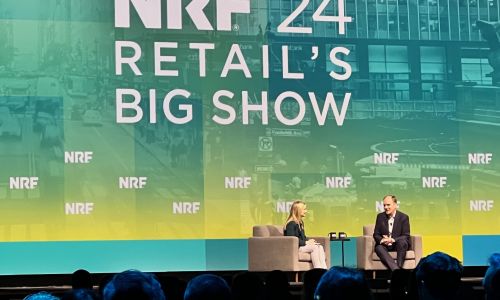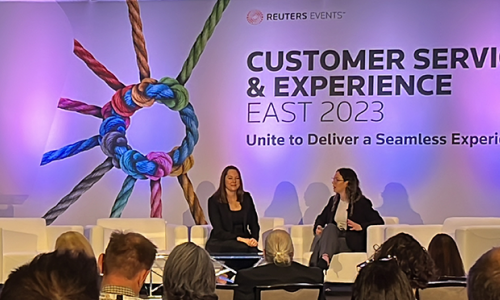As told to Eric Krell
The telecommunications industry is teetering on a customer experience tipping point. Many telecoms are poised to shift from product-centric to customer-centric operations.
Remarkably, a rich trove of crucial components for this transformation—such as high-speed Internet connectivity, fourth generation mobile networks, social media, text messaging, streaming media, and smart phones—is produced, managed, and enabled by companies within the telecommunications industry.
Other industries, most notably airlines and financial services, already have harnessed these telecommunications components to complete impressive, and well-publicized, customer experience transformations. In this respect, telecommunications companies may be playing catch up…at least until they harness their own most valuable asset.
The industry's crown jewel lies in the valuable customer data these companies possess. Telecommunications organizations that can collect, organize, analyze, and deliver this data, in the form of information to decision-makers can enhance customer experience, reduce costs, and increase profits.
The a-ha moment
Understanding how future customer experience programs might drive profits requires a look back.
Ten years ago the telecommunications industry's approach to customer experience focused almost entirely on the quality of the phone call. It was widely believed that customer experience was all about the quality of the network. Clear-sounding voices and the absence of dropped calls equated to "good customer experience."
A number of years ago, a JD Power survey swiftly expanded the industry's conventional wisdom on customer experience. In a customer survey of U.K.–based mobile service providers, Virgin Mobile was identified as having the best network quality. T-Mobile customers rated its network quality the lowest.
This was interesting news because Virgin Mobile was a virtual network. It did not even have a network, instead focusing its efforts on sales and marketing. In fact, Virgin Mobile used T-Mobile's network.
It turned out that network quality was not what mobile phone service companies needed to focus on if they wanted to manage and strengthen customer experience. Instead, savvy sales and marketing people in the industry realized that they should think of customer experience as the product of a range of factors, including brand, billing effectiveness, support quality, services bundling, and pricing. Further, the JD Power survey results revealed that customers' experience in certain areas (say, support or billing) can influence the perception of their experience in other areas. T-Mobile customers experienced the exact same call quality and reliability that Virgin Mobile customers received, but they believed it was far worse due to their experience during other important touchpoints.
Apple iPhones represent a current example of the wide range of factors that influence mobile customers' experience. Survey results and expert reviews indicate that iPhone customers contend with more call quality issues than, say, Verizon customers. Yet, the iPhone experience is about so much more than a voice platform. Customers appreciate the bundled services—mobile phone calls, email, Web surfing, video capabilities, and applications—and the brand identity that their iPhones offer.
Current versus future programs
Given the industry's nearly universal understanding that customer experience can and should be managed by pulling numerous different levers, it is somewhat disappointing that the primary objective of the vast majority of current customer experience programs in the industry remains focused on cost reduction.
Fortunately, this disappointment is tempered by the optimism inspired by a growing number of programs still in the process of being conceived or launched. The primary drivers of these emerging programs include improving process agility, enhancing data quality, and harnessing data analytics. Reducing costs remains an important objective, but today it rarely marks the only goal.
There is a growing recognition that telecoms want their next big customer experience program to focus on improving data quality, because data is absolutely central to everything they want to do from a customer experience standpoint. They have vast stores of data about their customers—calling patterns, viewing preferences, download activity, and much more—but this data needs to be converted into information that decision-makers can act on. The need for this data-to-information conversion is apparent within service centers where representatives routinely switch back and forth among numerous different screens to answer questions.
Loyalty programs represent one area of the new, data-focused approach to customer experience investment. For example, one telecom is implementing a sophisticated piece of software to track its customers' phone and service usage behavior and then devise rewards that tie to those preferences. So, if a customer is a heavy texter, the loyalty reward may take the form of a $20 credit for text messages. Or, if a customer downloads a large number of games from the apps store, the company may offer a credit to download X number of games by a certain date.
This is a far cry from the majority of recent loyalty programs, in which all customers are treated equally, regardless of their unique preferences and behavior. More mobile providers are in the process of tying loyalty rewards to personal preferences rather than providing generic rewards, such as complimentary concert tickets, that do not appeal to the majority of customers.
Measuring customer experience in the industry also represents an "emerging" process. Most companies are adept at measuring cost reduction and revenue growth associated with previous customer experience programs. A smaller but growing number of companies are beginning to evaluate customer experience through "new" direct feedback mechanisms, such as social media platforms and texting.
Full circle
Achieving this level of specificity in targeting customers requires huge amounts of integration among existing customer databases, billing systems, product and services catalogs, and more.
The need for this level of IT investment is not new. Ten years ago the industry invested huge amounts of money in customer experience initiatives. The nature and timing of this investment proved unfortunate. The bulk of this investment centered on cost reduction: introducing interactive voice response, removing representatives from the service chain, and the like. Plus, the industry was then on the verge of major change. High-speed Internet and cellular service spread rapidly, converged providers (e.g., those offering television, land line service, and cellular service) emerged, and new technology companies (Skype, Google, etc.) entered the fray.
How this fray looks 10 years from now will be determined by the degree to which companies put their new view of customer experience—one that starts with customer behavior rather than with back-office costs—into action.
Mobile and telecommunications technology enabled other industries to transform the customer experience; now it is up to telecommunications companies to harness their own tools—and most important, their own customer data—to effect their own transformation.






